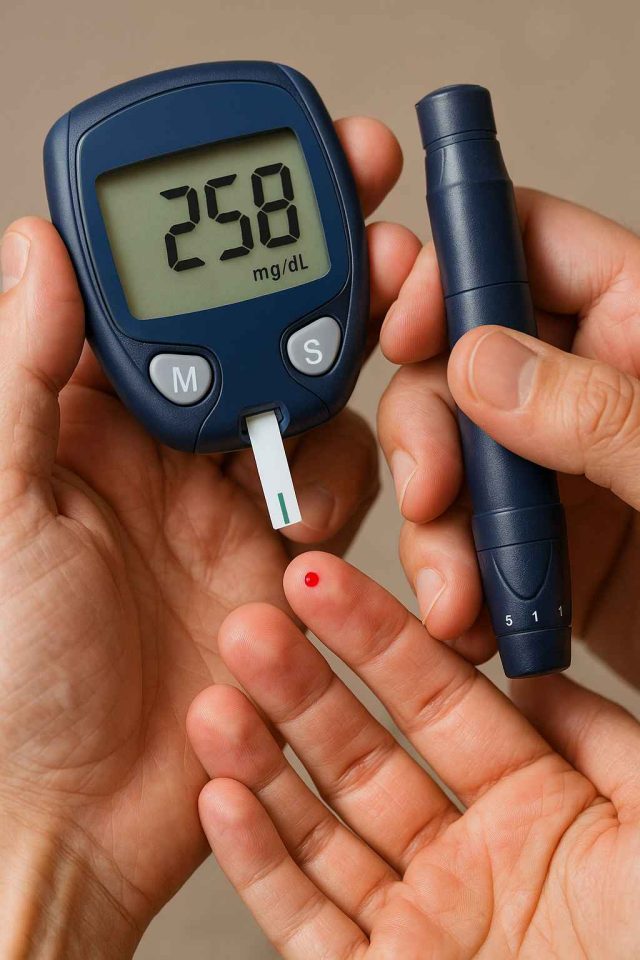Living with Type 1 diabetes is a full-time commitment, but even with excellent management, complications can still arise. The dangers of Type 1 diabetes complications range from cardiovascular issues to vision loss and nerve damage. What’s more concerning is how many of these conditions develop gradually and without early symptoms. So, how can people with Type 1 diabetes stay informed and protected against these risks?
Table of Contents
- Understanding Type 1 Diabetes Complications
- Short-Term and Acute Complications
- Long-Term Health Risks and Organ Damage
- Prevention, Early Detection, and Treatment Advances
- Conclusion and FAQs
Understanding Type 1 Diabetes Complications
Type 1 diabetes complications result from prolonged high blood sugar levels, which can damage blood vessels, nerves, and organs throughout the body. Unlike Type 2 diabetes, which is often linked to lifestyle, Type 1 is an autoimmune condition that usually begins in childhood or adolescence. Because of this early onset, the risk of complications can accumulate over decades if not carefully managed.
Hyperglycemia and hypoglycemia are immediate concerns, but the more serious dangers often emerge over time. These complications can affect nearly every system in the body. While insulin therapies and continuous glucose monitors (CGMs) like Dexcom G7 and the FreeStyle Libre 3 have revolutionized care, perfect control is still difficult to achieve.
Unfortunately, even mild fluctuations in blood glucose levels over the years can silently contribute to complications. That’s why regular monitoring and early intervention are essential. Staying updated through platforms like Diabetes in Control can provide helpful guidance.
Short-Term and Acute Complications
Although long-term complications get more attention, acute issues can be just as dangerous if not addressed quickly. Diabetic ketoacidosis (DKA) is one of the most serious immediate complications of Type 1 diabetes. DKA occurs when the body lacks insulin and begins breaking down fat for fuel, producing ketones that make the blood acidic. Symptoms include nausea, abdominal pain, confusion, and in severe cases, unconsciousness.
Hypoglycemia—low blood sugar—is another acute danger. It can occur from too much insulin, not eating enough, or intense physical activity. Warning signs include shaking, sweating, rapid heartbeat, and blurred vision. Severe episodes can lead to seizures or coma.
These conditions require urgent care. The availability of fast-acting insulins like Fiasp and inhaled options like Afrezza has improved acute glucose management, but the margin for error remains slim.
Long-Term Health Risks and Organ Damage
Over time, high blood sugar levels damage the body in numerous ways. Among the most common long-term Type 1 diabetes complications are cardiovascular disease, nephropathy (kidney damage), neuropathy (nerve damage), and retinopathy (vision impairment).
Heart disease is the leading cause of death in people with diabetes. Narrowed arteries, high blood pressure, and increased clotting risks all raise the odds of heart attacks and strokes. In fact, people with Type 1 diabetes are significantly more likely to suffer cardiovascular events at a younger age.
Kidney complications often go unnoticed until damage is severe. The kidneys’ filtering units—glomeruli—can become scarred, leading to protein leakage (albuminuria) and, eventually, kidney failure. Many patients require dialysis or a transplant.
Nerve damage affects both sensation and function. Peripheral neuropathy causes pain or numbness in the limbs, while autonomic neuropathy can impact digestion, bladder control, and even heart rate regulation. These issues can drastically reduce quality of life.
Retinopathy remains a top concern. Chronic high blood sugar harms the small vessels in the retina, leading to vision loss. If untreated, it can progress to blindness. Early detection through annual eye exams is vital.
Even when glucose control appears stable, subtle damage may still be accumulating. That’s why endocrinologists now promote more proactive monitoring and emerging therapies. When in doubt, it’s smart to consult specialists through Healthcare.pro for expert guidance.
Prevention, Early Detection, and Treatment Advances
Preventing complications starts with consistent blood glucose management. But modern medicine now offers more than just insulin and routine testing. Closed-loop insulin delivery systems, or “artificial pancreas” devices, are becoming increasingly common. These tools help automate insulin dosing in response to real-time glucose readings.
Additionally, newer long-acting insulins like Tresiba provide steadier coverage and reduce nighttime hypoglycemia. Medications like SGLT2 inhibitors, though traditionally used for Type 2, are now being tested for their protective effects in Type 1 patients—particularly for kidney and heart health.
Regular screening remains essential. Annual checks for microalbuminuria, foot exams, and retinal scans help catch warning signs early. Comprehensive care also includes mental health support, as living with a chronic condition increases the risk of depression and anxiety.
Education is a powerful tool. Patients who understand their risks and stay current on research are more likely to maintain control. Reputable sources like Diabetes in Control can be trusted for evidence-based updates and insights.
Conclusion and FAQs
The dangers of Type 1 diabetes complications are both immediate and long-term. While acute issues like DKA and hypoglycemia demand quick responses, chronic complications such as heart disease, kidney failure, and vision loss require long-term vigilance. Thankfully, advancements in diabetes technology and treatment are making it easier to prevent or delay these outcomes.
Frequently Asked Questions
What are the most common complications of Type 1 diabetes?
Cardiovascular disease, kidney failure, neuropathy, and retinopathy are among the most prevalent long-term complications.
Can Type 1 diabetes complications be reversed?
Most complications can be slowed or managed with good glucose control, but some, like nerve or kidney damage, may not be fully reversible.
Is diabetic ketoacidosis life-threatening?
Yes, DKA is a medical emergency. If untreated, it can lead to coma or death.
How often should screenings be done for complications?
Most experts recommend annual screenings for kidneys, eyes, and nerves, starting a few years after diagnosis.
Do advanced insulins reduce the risk of complications?
Yes, insulins like Tresiba and rapid-acting options help achieve better control, which lowers the risk of developing complications.
This content is not medical advice. For any health issues, always consult a healthcare professional. In an emergency, call 911 or your local emergency services.
